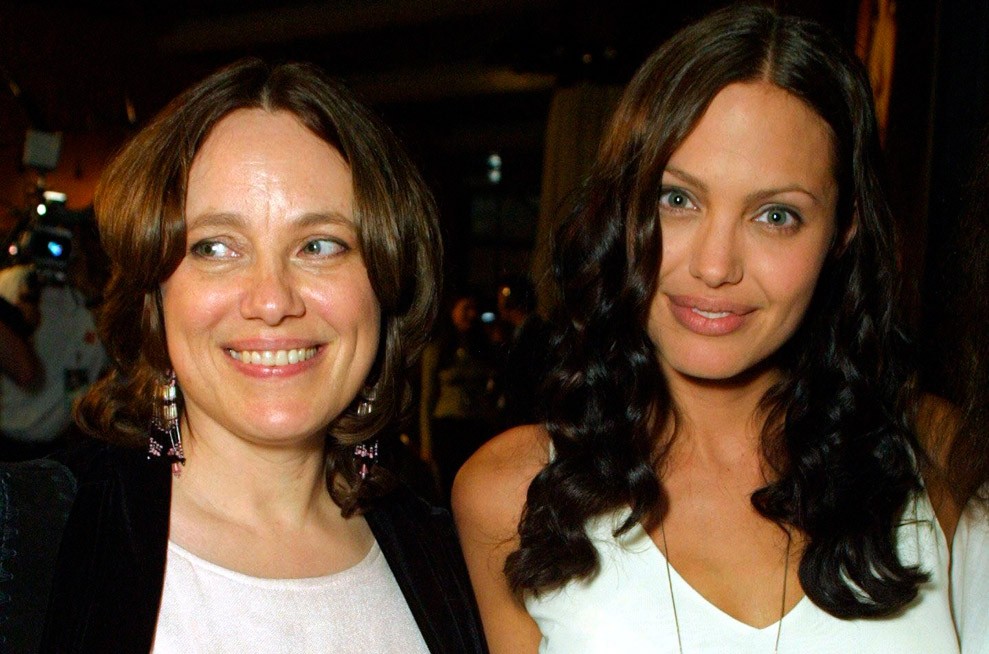Angelina Jolie Double Mastectomy: Everything You Need To Know
After Angelina Jolie's brave admission that she's undergone a preventative double mastectomy to reduce her risk of breast cancer, we asked two experts to break down exactly what this means for women everywhere

After Angelina Jolie's brave admission that she's undergone a preventative double mastectomy to reduce her risk of breast cancer, we asked two experts to break down exactly what this means for women everywhere
Angelina Jolie revealed she's had a preventative double mastectomy, after she discovered she's carrying the BRCA1 cancer gene, in order to encourage other women who could be at risk to make an informed decision. In light of this, we've spoken to two experts to find out exactly what is involved in the procedure and how you can set about getting tested if you have a strong family history of the disease. What is the BRCA1 cancer gene and how can someone be tested for it if they are worried about breast cancer?
The BRCA1 gene is a suppressor gene. If it mutates it can cause hereditary breast or ovarian cancer. To test for the gene, a woman simply needs to ask for a blood test which is then analysed. How long the results take depends on when and where you have the test.
How common is it?
Around five to 10 per cent of all families, where breast or ovarian cancer have occurred, have members who are carrying the mutated BRCA1 or BRCA2 gene, which greatly increases the chances of developing breast or ovarian cancer.
It's important to remember that fewer than one in 20 cases of breast cancer are inherited. In most instances of this genetic mutation, these genes are passed on from parents to children, but there are instances where it has simply occurred without being inherited.
Can anyone be tested, or do you have to have a history of breast cancer in the family?
Celebrity news, beauty, fashion advice, and fascinating features, delivered straight to your inbox!
Any woman can have the test if you are willing to pay privately. However, to have the test on the NHS or via a private insurer you need to exhibit a strong family history of breast or ovarian cancer. A specialist will look at which members of your family had cancer, and at what age they suffered from it, to determine whether the test is suitable. Normally it is only recommended for those who have a number of family members who were diagnosed at a young age.

Are there different types of mastectomy?
There are several different types of mastectomy. The most invasive is a radical mastectomy where the majority of the tissue and the skin of the breast are removed. This is normally used for those with cancer. Then there is the skin-sparing mastectomy, which preserves the skin envelope and allows for reconstruction with an implant to take place straight away. And in the case of a nipple-sparring mastectomy the breast tissue is removed, but the nipple-areola area is preserved. This form of mastectomy is more suited to those without cancer as a preventative measure.
How effective is a mastectomy in preventing breast cancer? Is it worth the op?
During a mastectomy, you cannot remove all breast tissue as there are no defined perimeters, it is not the same as taking away the liver or lung, for example. However, you can remove up to around 90 - 95 per cent of the tissue which eradicates the risk of cancer. For those at a high risk it is worth it, simply for peace of mind.
If the thought of a mastectomy is too frightening, what other options are there for women deemed at risk?
There are three options:
1) Surveillance - a woman can monitor her risk with yearly MRI's and mammograms. 2) Ovary Removal - for some women they opt to have their ovaries removed instead as this can reduce the risk of breast cancer. 3) Tamoxifen - research has found that taking the hormonal therapy tamoxifen can reduce the risk of cancer developing.
However, for the best results a double mastectomy will reduce the risk to a greater degree.
What is the recovery time after a mastectomy?
This depends on whether you opt for reconstruction at the same time. Normally post operation you will need three to four days in hospital, and recovery at home will take approximately five to six weeks.

Is counselling available afterwards?
Depending on where the patient is treated, women should be seen by a mixture of counsellors, psychiatrists and breast cancer nurses to help them recover in the best way. We always suggest that these women meet other patients who have undergone the procedure. It's vital that they are made to feel comfortable with their decision as it can have a large impact psychologically.
Can you talk us through the breast reconstruction process?
There are two types of reconstruction. The first involves an implant being inserted, along with a matrix to hold the implant in place. The second involves using tissue from the woman's stomach, buttocks or inner thigh to construct the breast.
Is it available on the NHS?
The treatment is available on the NHS and there is a waiting time of around four to five months for the procedure.
Are there any side effects?
Alongside bruising and recovery time, the main side effect is the psychological impact. For most women there is the positive side effect of overwhelming relief. They can get on with their lives without the constant worry that they may develop cancer down the line.
We spoke to Mr Jian Farhadi, a Consultant Plastic Surgeon, and Dr Gabriella Pichert, Consultant Cancer Geneticist, at London Bridge Hospital.
What do you think of Angelina Jolie's decision to have a double mastectomy? Let us know in the comment box below.